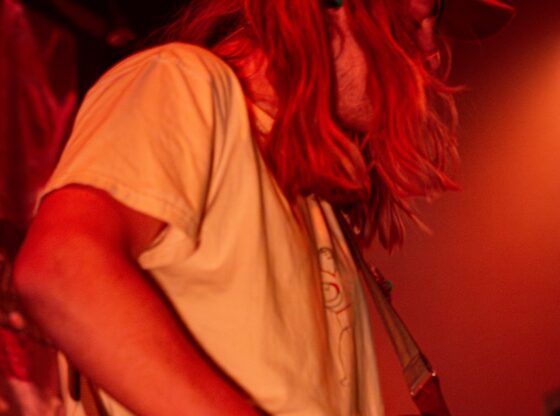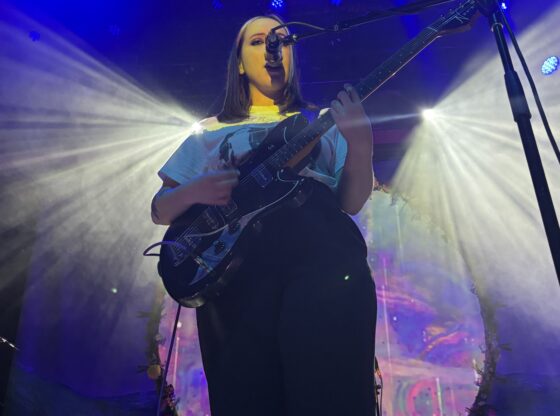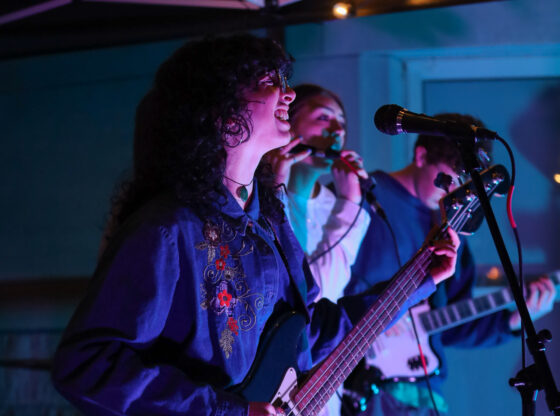On March 24, new wave singer/songwriter, Devonté Hynes, otherwise known as Blood Orange, released a tryptic music video consisting of three songs, “With Him,” “Best to You,” and “Better Numb” from his recent album “Freetown Sound.” The video was released exclusively on Tidal and features actress and activist Amandla Stenberg (“Hunger Games”) accompanying Hynes on piano as well as violin.
Blood Orange has been releasing eccentric indie rock sounds since the debut album “Coastal Grooves” was released in 2011. His music is admired for its richness not only in regard to instrumental diversity, but also to the statements on race and anxiety that are woven subtly into his lyrics and visuals. Hynes along with a few other visionary musicians have cleared out a new space in the industry for more interpretive, historical and dynamic music that can still relate to youth culture and current political unrest.
Hynes and artists like Solange and the cellist Kelsey Lu are working both collaboratively and independently within this new avant-garde genre, experimenting with classical music and symbolic dance to spur contemplation and conversations on racial issues. Blood Orange’s new video encompasses the heart of the new movement through juxtaposing flashing police lights, fear and isolation with dance, intimacy and composure set in what looks to be inner-city Los Angeles.
Visuals are integral to this experimental genre, allowing the artist to guide the audience’s interpretation of a song or lyric. Videos from Blood Orange are never lacking in vibrancy or valor, from the blood-stained tragedy of “I’m Sorry We Lied” to the strange paper-doll penthouse in “Champagne Coast.” The classical melodies and delicate vocals are often accented with succinct stories pulled from candid shots of native New Yorkers. This video, however, moves beyond accentuation. With visuals of bare skin on skin, stillness and motion, breath and dance, the video mirrors the unspoken theme of “Freetown Sounds”: body.
Hynes creates his music from motion and chaos, from the thousands of sensations one experiences simply walking home from work. He wants people to encounter his music as they would physically encounter a crowded city street, through sight and sound as well as natural spins of emotion—feelings of tension, anxiety, joy and sorrow. In the new video, the lyrics are often overwhelmed by intricate scores or choreography. In the segment featuring the song “Better Numb,” Hynes’s voice is distant and uncertain, sinking into the background as we watch him move in meditated yet imperfect steps across a stage. This muddling of sounds and visuals evokes the sensation of being overstimulated, one of the more subtle moments of fixation on body and mindfulness.
In the new video, Hynes takes the sensorial, moody nature of his sound and matches it with striking images of mothers, lovers, musicians, almost all of whom are black. The shots that were taken contrast vulnerability with rigidity speaking to the album’s theme of moving through life with a black body. In the quiet intro, the camera follows Hynes as he runs with a look of desperation down the center of a street. The video then cuts to Hynes standing beside a solemn young woman who is holding a baby while blue and red lights flash around them. The video does not have a graphic scene of police brutality, nor are there any moments of violence or pain, and yet there is still a forceful comment being made about societal disregard of inner-city communities and the feelings of fear and mistrust that run through them.
Hynes’ songs are inspired by this communal anxiety as well as personal fears of misperception, agitations that have followed him throughout his life growing up black in London and then later while experiencing racial tensions in the United States when he moved here at the age of twenty-one. He gracefully illustrates these conflicts between body and mind through dance. In the Tidal video, Hynes performs a solitary number composed of strange but beautiful movements. The music is hushed, drawing the viewer’s attention solely to the control he possesses over his shape and the expression of each motion. Hynes’s harmony and solidarity with his body is a defiance against prejudice perception that a black body is a barrier or blockade that black women and men have to hurdle over and abandon in order to thrive.
Blood Orange’s new video is an exhibition of Hynes’s ability to create his art using his voice, his instruments, his anxiety and his body. From the sensorial and emotional themes of “Freetown Sounds” to the new video’s concentration on the fears and misconceptions that weigh down black communities, it is evident that Blood Orange sees his work as a vehicle for spreading feelings self-acceptance, and encouraging others to seek freedom through creative expression.











